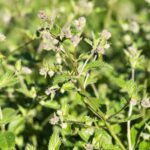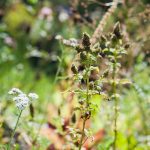Salt Lake City Vegetable Gardening is a popular and rewarding activity for residents of this unique city. With its distinct climate and soil conditions, vegetable gardening in Salt Lake City presents both opportunities and challenges for gardeners.
In this article, we will explore the ins and outs of vegetable gardening in Salt Lake City, from understanding the local climate and soil to selecting the right vegetable varieties, preparing the garden, and caring for the plants. Whether you are a seasoned gardener or a beginner, this guide will provide you with valuable insights and practical tips to help you create a successful vegetable garden in Salt Lake City.
Salt Lake City’s semi-arid climate presents certain considerations for vegetable gardeners. Understanding the specific characteristics of the local climate and soil is essential for choosing suitable vegetables and implementing proper care practices. By familiarizing yourself with these factors, you can maximize your gardening success and enjoyment. In this section, we will delve into the unique climate and soil of Salt Lake City, providing you with valuable guidance on how to navigate these aspects as a vegetable gardener.
In addition to discussing the climate and soil conditions of Salt Lake City, we will also explore how to select the right vegetable varieties for this region. Certain vegetables thrive in the specific environment of Salt Lake City, while others may require special attention or modified growing techniques.
By learning which varieties are best suited for your local conditions, you can set yourself up for a bountiful harvest and an enjoyable gardening experience. So let’s get started on our journey to discover the world of vegetable gardening in Salt Lake City.
The Climate and Soil of Salt Lake City
Salt Lake City, located in the high desert of Utah, experiences a unique climate and soil makeup that can pose both challenges and opportunities for vegetable gardeners. Understanding the specific conditions of the city is crucial for successful gardening.
Climate Overview
Salt Lake City has a semi-arid climate with hot, dry summers and cold, snowy winters. The city experiences temperature extremes, with temperatures reaching as high as 100°F in the summer and dipping well below freezing in the winter. This climate can make it challenging to grow certain vegetables, but with careful planning and attention to seasonal variations, successful gardening is possible.
Soil Composition
The soil in Salt Lake City is characterized by its high clay content and alkaline pH levels. This type of soil can present difficulties for plant growth, as it tends to compact easily and drain poorly. However, amending the soil with organic matter such as compost or well-rotted manure can improve its structure and fertility, making it more suitable for vegetable cultivation.
Adapting to the Climate and Soil
To thrive in Salt Lake City’s unique climate and soil conditions, it’s important to select vegetable varieties that are well-suited to these challenges. Drought-tolerant plants like tomatoes, peppers, and squash are great choices for Salt Lake City vegetable gardening.
Additionally, raised beds or container gardening can help mitigate some of the issues associated with the local soil composition and provide better control over watering and drainage. By adapting planting methods to align with the specificities of Salt Lake City’s environment, vegetable gardeners can successfully grow a wide variety of delicious produce.
Choosing the Right Vegetable Varieties for Salt Lake City
When it comes to vegetable gardening in Salt Lake City, choosing the right varieties is crucial for a successful and bountiful harvest. The unique climate and soil conditions of Salt Lake City require gardeners to select vegetable varieties that are well-suited for the area. Here are some tips for choosing the right vegetable varieties for your Salt Lake City garden:
- Consider the Climate: Salt Lake City experiences hot, dry summers and cold, snowy winters. When selecting vegetable varieties, look for ones that can tolerate these temperature extremes. Heat-tolerant vegetables such as tomatoes, peppers, and eggplant are great choices for summer gardening, while cold-hardy vegetables like kale, carrots, and spinach thrive in the cooler months.
- Soil Adaptability: Salt Lake City’s soil tends to be alkaline with low organic matter. Choose vegetable varieties that can adapt to these soil conditions. Look for plants that are known for their ability to grow in alkaline soils, such as beets, onions, and Swiss chard.
- Short Growing Season: Due to the city’s high elevation, Salt Lake City has a shorter growing season compared to other regions. Select vegetable varieties with a shorter maturity period to ensure they have enough time to grow and produce before the first frost hits. Quick-growing options include radishes, lettuce, and bush beans.
By carefully considering the climate, soil adaptability, and growing season of Salt Lake City, gardeners can choose vegetable varieties that are more likely to thrive in their gardens. Consulting with local nurseries or agricultural extension services can also provide valuable insight into which vegetables are best suited for the area.
Overall, by selecting the right vegetable varieties for Salt Lake City, gardeners can increase their chances of having a successful and productive harvest while enjoying a wide variety of homegrown produce throughout the year.
Best Practices for Preparing and Planting a Vegetable Garden in Salt Lake City
Planting a vegetable garden in Salt Lake City requires careful consideration of the unique climate and soil conditions. By following best practices for preparing and planting your garden, you can increase the likelihood of a successful harvest.
Soil Preparation
Before planting your vegetable garden, it is essential to prepare the soil properly. In Salt Lake City, the soil is often alkaline and may need amendments to improve its fertility and drainage. Consider conducting a soil test to determine the pH level and nutrient content of your soil. Based on the results, you can then add organic matter, such as compost or well-rotted manure, to improve the soil structure and provide essential nutrients for your plants.
Choosing the Right Location
Selecting the right location for your vegetable garden is crucial for its success. Most vegetables require at least 6-8 hours of sunlight per day, so choose a spot in your yard that receives ample sunlight. Additionally, consider factors such as proximity to water sources, protection from strong winds, and access to necessary tools and equipment. By strategically choosing a location for your garden, you can create an optimal growing environment for your vegetables.
Planting Techniques
When it comes to planting your vegetable garden in Salt Lake City, it’s important to follow recommended spacing guidelines for each type of plant. Proper spacing allows for adequate airflow between plants, which can help prevent disease and promote healthy growth. Additionally, consider utilizing techniques such as companion planting to maximize space and deter pests naturally. As you plant your vegetables, be mindful of their watering needs and provide consistent moisture throughout the growing season.
By implementing these best practices for preparing and planting a vegetable garden in Salt Lake City, you can set yourself up for a bountiful harvest of fresh produce while enjoying the rewards of gardening in this unique region.
Tips for Caring for and Maintaining a Successful Salt Lake City Vegetable Garden
After you have prepared and planted your vegetable garden in Salt Lake City, it’s important to care for and maintain it to ensure a successful harvest. Here are some tips to help you keep your garden thriving:
1. Watering: Salt Lake City has a semi-arid climate with low annual precipitation, so it’s crucial to water your vegetable garden regularly, especially during the hot summer months. Consider investing in a drip irrigation system or soaker hoses to ensure that your plants receive consistent moisture.
2. Mulching: Applying a layer of mulch around your vegetables can help conserve soil moisture, suppress weeds, and regulate soil temperature. Organic mulches like straw or shredded leaves are great options for vegetable gardens in Salt Lake City.
3. Fertilizing: Test your soil to determine its nutrient levels and pH, then amend as needed with organic fertilizers or compost. Regularly feeding your plants will promote healthy growth and bountiful yields.
4. Pest Control: Keep an eye out for common pests like aphids, caterpillars, and spider mites that can wreak havoc on your vegetable garden. Consider using natural pest control methods such as insecticidal soaps or introducing beneficial insects like ladybugs to keep pest populations in check.
5. Support and Pruning: As your vegetable plants grow, provide support for vining crops like tomatoes and cucumbers with stakes or trellises. Additionally, regular pruning of dead or overcrowded foliage will improve air circulation and reduce the risk of disease.
By implementing these care and maintenance tips, you’ll be well on your way to enjoying a successful vegetable garden in Salt Lake City. Remember to stay proactive in addressing any challenges that may arise, and seek out local gardening resources and events to connect with other passionate vegetable gardeners in the area.
Dealing With Common Pests and Diseases in Salt Lake City Vegetable Gardens
One of the challenges that vegetable gardeners in Salt Lake City face is dealing with common pests and diseases that can affect their plants. The dry climate of Salt Lake City can create a hospitable environment for certain pests, while the high elevation and temperature fluctuations can make plants more susceptible to certain diseases. It’s important for vegetable gardeners to be proactive in preventing and managing these issues to ensure a successful harvest.
Common pests that may affect vegetable gardens in Salt Lake City include aphids, caterpillars, and spider mites. These pests can cause damage to plants by feeding on leaves, stems, and fruit. In addition, diseases such as powdery mildew, blossom end rot, and early blight can also impact vegetable crops. Identifying these pests and diseases early on is crucial in preventing them from spreading and causing extensive damage to the garden.
To prevent and manage common pests and diseases in Salt Lake City vegetable gardens, there are several effective strategies that gardeners can employ. Implementing proper crop rotation, practicing good sanitation by removing plant debris, using row covers or netting to protect plants from pests, and applying organic or chemical treatments when necessary are all effective methods for controlling pests and diseases. Additionally, choosing disease-resistant varieties of vegetables can help minimize the risk of certain diseases affecting the garden.
According to Utah State University Extension’s “Vegetable Gardening: Pest Management” guide, keeping a close eye on the garden for any signs of pest infestations or disease development is essential for successful vegetable gardening in Salt Lake City. By being vigilant and taking proactive measures to address common pests and diseases, vegetable gardeners can maintain healthy and productive gardens throughout the growing season.
| Common Pests | Preventive Measures |
|---|---|
| Aphids | Use insecticidal soap or neem oil to control infestations. |
| Powdery Mildew | Avoid overhead watering to reduce humidity levels around plants. |
| Caterpillars | Hand-pick caterpillars off plants or use biological control methods like Bacillus thuringiensis (Bt). |
Harvesting and Enjoying the Fruits of Your Labor
When it comes to vegetable gardening in Salt Lake City, one of the most rewarding aspects is undoubtedly the harvest. After putting in the hard work of preparing, planting, and caring for your garden, it’s time to reap the benefits of your efforts. Whether you’re growing tomatoes, cucumbers, carrots, or lettuce, there’s nothing quite like enjoying the fresh produce from your own backyard.
As you start harvesting your vegetables, it’s important to do so at the right time to ensure optimal flavor and quality. For example, tomatoes should be picked when they are fully ripe and have a deep color, while lettuce is best harvested when the leaves are young and tender. Proper timing will allow you to savor the full taste of your home-grown vegetables.
In addition to enjoying the fruits of your labor straight from the garden, there are also various ways to preserve and store your harvest for later use. Canning, freezing, pickling, and drying are all popular methods for extending the shelf life of vegetables. By doing so, you can continue to savor the flavors of your Salt Lake City vegetable garden long after the growing season has ended.
| Vegetable | Optimal Harvest Time |
|---|---|
| Tomatoes | When fully ripe with deep color |
| Lettuce | When leaves are young and tender |
| Cucumbers | When firm and bright green |
Community Resources and Events for Salt Lake City Vegetable Gardeners
For those looking to dive into vegetable gardening in Salt Lake City, there are a plethora of community resources and events available to help you along the way. From local gardening clubs to workshops and events, there are plenty of opportunities to connect with fellow gardeners, learn new skills, and share your own knowledge and experiences.
One excellent resource for Salt Lake City vegetable gardeners is the local agricultural extension office. They often offer classes and workshops on topics such as soil health, pest management, and specific vegetable varieties that thrive in the area’s unique climate. Additionally, these offices can provide valuable information on soil testing and fertility, ensuring that your garden gets off to a strong start.
Gardening clubs and community gardens are another fantastic resource for those interested in vegetable gardening in Salt Lake City. These organizations offer opportunities to learn from experienced gardeners, access communal tools and resources, and even participate in group planting projects. Many community gardens also host events such as seed swaps, plant sales, and harvest festivals, creating a vibrant and supportive network for local vegetable growers.
In addition to these resources, keep an eye out for events such as farmers’ markets, plant sales, and gardening workshops held throughout Salt Lake City. These can provide valuable information on successful gardening practices while also connecting you with local suppliers of seeds, plants, tools, and other necessary supplies for your vegetable garden.
By taking advantage of these community resources and events, you can enrich your experience as a Salt Lake City vegetable gardener while connecting with others who share your passion.
Conclusion
In conclusion, vegetable gardening in Salt Lake City can be a rewarding and enjoyable experience for both novice and experienced gardeners. The unique climate and soil of the area present certain challenges, but with the right knowledge and preparation, it is possible to grow a thriving and bountiful garden. By choosing the right vegetable varieties, following best practices for planting and maintenance, and utilizing community resources, Salt Lake City residents can successfully cultivate their own fresh produce.
As highlighted in this guide, understanding the specific climate and soil of Salt Lake City is crucial for successful vegetable gardening. With hot summers, cold winters, and alkaline soil, gardeners must carefully select suitable plant varieties and implement appropriate care and maintenance practices. Additionally, being aware of common pests and diseases in the area will help gardeners proactively protect their crops.
Furthermore, participating in community events and connecting with local resources can greatly enhance the vegetable gardening experience in Salt Lake City. From attending workshops to joining community gardens, there are numerous opportunities for learning, sharing knowledge, and enjoying the company of fellow gardening enthusiasts. Ultimately, by embracing the joy of vegetable gardening in Salt Lake City, residents can not only enjoy high-quality fresh produce but also foster a deeper connection to nature and their local community.
Frequently Asked Questions
What Vegetables Grow Best in Salt Lake City?
In Salt Lake City, vegetables that grow best include tomatoes, peppers, carrots, kale, spinach, and lettuce. These plants thrive in the region’s climate and soil conditions, making them popular choices for local gardeners.
When Should I Plant My Garden in Salt Lake City?
The ideal time to plant a garden in Salt Lake City is typically in late April or early May. This timing allows the soil to warm up sufficiently and reduces the risk of frost damage to young plants. It’s important to pay attention to the local climate and weather patterns when planning your planting schedule.
When Should I Plant Tomatoes in Utah?
In Utah, it’s best to plant tomatoes after the danger of frost has passed, which is usually around mid-May in most areas. Tomatoes are sensitive to cold temperatures, so waiting until the spring weather has stabilized will give them the best chance of thriving. Keep an eye on the local weather forecasts before setting out your tomato plants.

If you’re looking to get into vegetable gardening, or are just looking for some tips on how to make your current garden better, then you’ve come to the right place! My name is Ethel and I have been gardening for years. In this blog, I’m going to share with you some of my best tips on how to create a successful vegetable garden.





